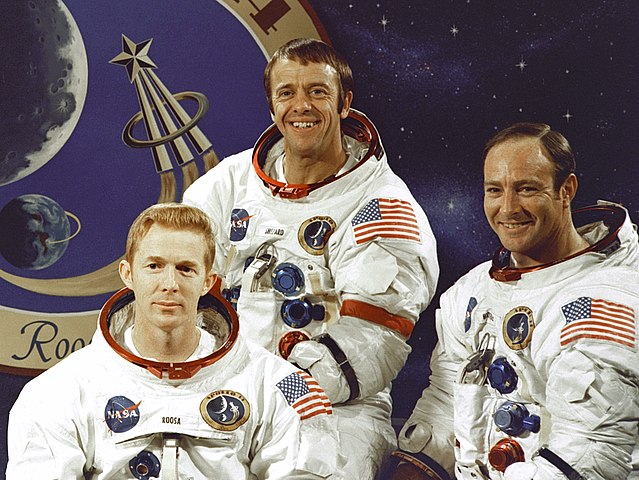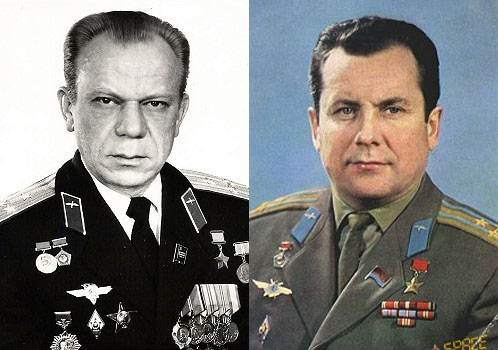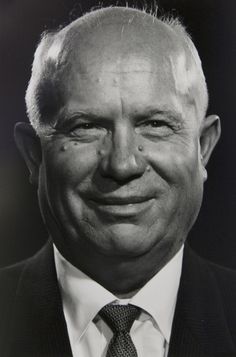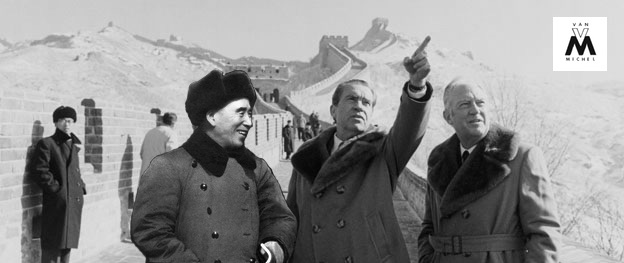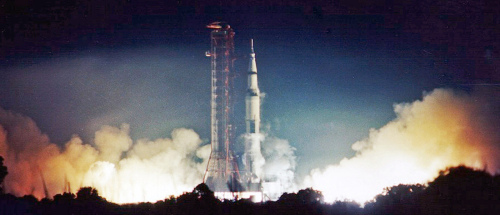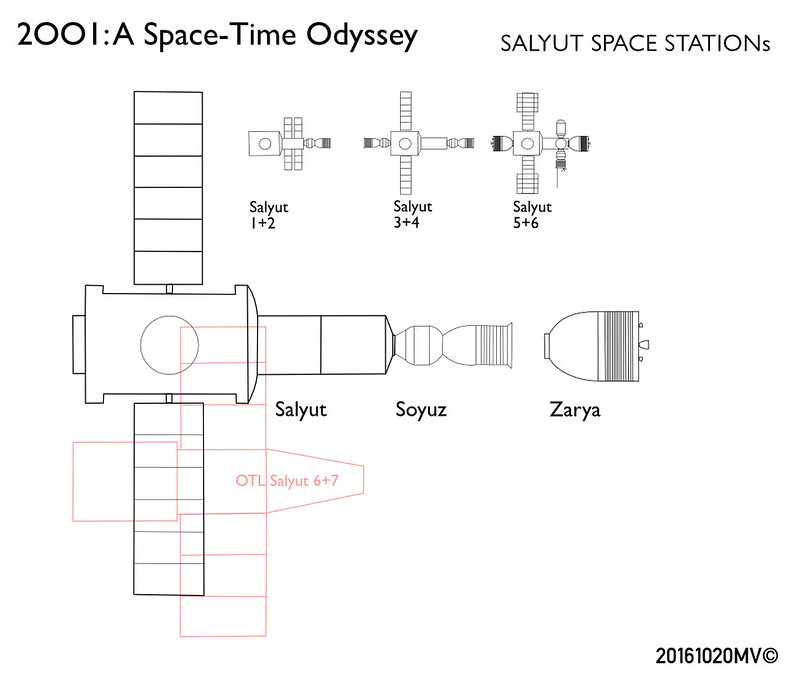Part 13 - Apollo 12 & 13 vs Soyuz 12 & 13
November 14th 1969
Being the last mission of the year, the engineers on Apollo 12 wanted to make sure this mission count.
Since Soviet were not launching do issue with their Lunniy korabl.
This mission marked the second manned lunar landing of the Apollo program and rendezvous with Surveyor 3 probe,
Launching on schedule on November 14th 1969, the Saturn V was taking off during a rainstorm.
36 seconds after lift-off, the vehicle triggered a lightning discharge through itself and down to the earth through the Saturn's ionised plume.
Protective circuits on the fuel cells in the service module falsely detected overloads and took all three fuel cells offline,
Along with much of the CSM instrumentation. A second strike at 52 seconds after launch knocked out the "8-ball" attitude indicator.
The telemetry stream at Mission Control was garbled.
However, the Saturn V continued to fly correctly as the strikes had not affected Saturn V's Instrument Unit.
with quick manual override to backup the mission continue and Conrad and Alan Bean manage close landing near Surveyor 3
Charles Conrad first word on moon were:
"Yippee ! did you see that commies ?, we can do spot on landing too !".
This was televised nationwide to millions of people and was followed by a fit of coughing by Walter Cronkite on NBC.
During 31 hours on Moon they conducted 3 EVA were several sample were taken also from Surveyor 3.
With both the color television film and the fantastic selfie photo next to Surveyor (with the LM easily seen in the background)
Apollo 12 was featured prominently in Time Magazine as a year end consolation for losing the Moon race.
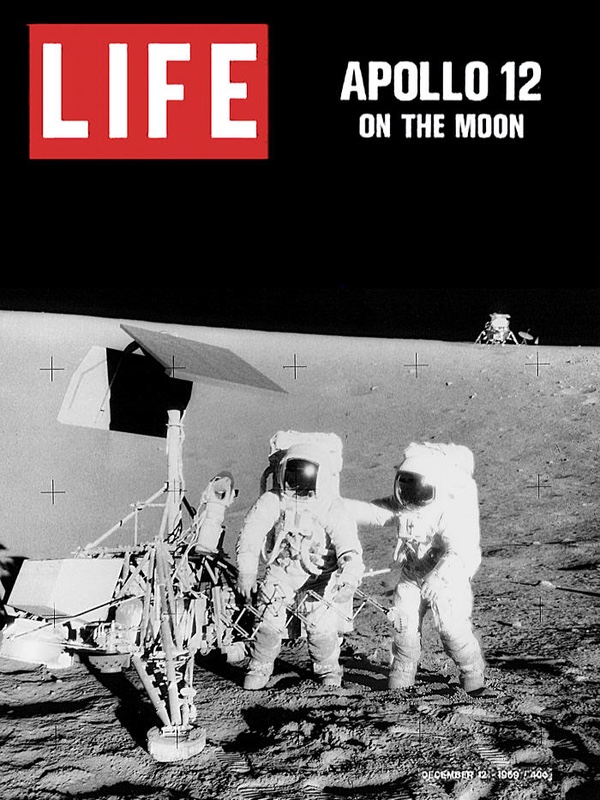
The 1960s was a time of great change in social, political, technological and economic worldwide.
The decade began with a series of crisis: the Brezhnev Crisis, the failed invasion of Cuban, the Berlin Crisis,
The assassination of the President of the United States John F. Kennedy, the race riots, civil unrest, the Vietnam war etc.
The Vietnam War was a particularly shocking blow to the United States.
As the crisis following the death of Mao Zedong in China lead to increased militarism at Vietnam border,
The United States was forced to choose pullback and defeat or risk of a Korea-like conflict sparking an all out nuclear conflict.
Thankfully, Johnson chose the pullback although, with the prise that Republicans swept into the White House at decades end.
In USA racial barriers were broken as Martin Luther King Jr lead the civil rights movement,
Ultimately leading to the passage of the Civil Rights Act in 1964 (abolishing Jim Crow & Segregation)
But not only in US but in Europe and East block happened changes
Alexander Dubcek played a big role in reforming Czechoslovakia to create "Socialism with a human face".
While East Germany would undergo a drastic changes in coming years, as Walter Ulbrich public critiqued the german Communist !
In West Germany the government face radical leftist Terrorist inspire by Vietcong.
France had almost civil War in May 1968 as student riots let nationwide uprise !
While group of environmentalist voted for armed combat. they will become the Rainbow Warriors
People were look onwards on 1970s in hope and fear what would bring that new Decade ?
The problems of Soyuz 11's landing made overwork of the LK necessary, along with getting ready to launch for April 1970.
To honor Vladimir Lenin's 100th Birthday.
In the mean time Apollo 12 made their precision landing in November 1969.
Beginning in January 1970 Lunokhod 4 landed on the lunar surface, driving until it they found what it was looking for and switched on The radio beacon, after an unusually long search time.
Soyuz 12.

Beginning in April was launch of an N1 Luna rocket with Soyuz-12 on board Georgi Grechko and Aleksey Guarev
for Orbital mission and landing of the unmanned LK Backup.
After Lunar Surface Mapping they return to earth passing by Apollo 13 on way to the Moon.
Guarev on this unique encounter:
It is strange there was another manned complex on way to Moon, we knew there were out there, but not could see them.
While they fighting for Survival on board, we fall back to Earth unable to help them..
Apollo 13

On April 11, Apollo 13 was launched to moon with Lovell, Mattingly, Haise, under a lack of interest with the US public and media.
The Saturn V showed a malfunction suffering from pogo oscillations and on second stage one of J-2 engine shut down too early.
56 hours into the mission, Mattingly activate the stirring fans in Oxygen tank number 2 which then exploded!
Mattingly: Houston, we have a master alert here!
CAPCOM: This is Houston, Say again, please
Mattingly: Houston, We’ve got MASTER ALERT!
Lovell: We’ve hav a MAIN B BUS UNDERVOLT!!!
The CSM main power system died in minutes, The Crew activated the LM and used it as a Lifeboat
From now on Apollo 13 mission became a struggle for the survival of three Astronauts,
Suddenly the world media show interest in Apollo mission.
In a Heroic effort NASA manage to bring the Crew safe back to Earth, calling it "A successful failure"
Apollo 13 showed America that Space flight were not easy.
The cause of the explosion was found in damaged Teflon isolation tape on electrical wires of the stirring fan inside the oxygen tank.
The Oxygen tanks were redesigned and moved farther apart, also a third oxygen tank and a emergency battery were installed,
Also started a program to replace the lithium hydroxide canister from LM and CSM with molecular sieve beds for future mission.
This delayed Apollo 14 mission to January 1971.
Soyuz 13
The next Luna rocket brought Soyuz-13 into the Moon's orbit with Vesily Lazarev and Oleg Makarov on board.
on 22 April 1970, Makorov landed 55 km away from Apollo 12 & Surveyor 3 Landing site confirmed by their ALSEP seismograph.
The Target was near Luna 5 crash site, a probe that failed to land on may 9, 1965.
Oleg Mekarov's first word on Moon were:
To Honor Vladimir Lenin 100th Birthday, We came back to the Moon, to unravel it’s secrets.
After that he deployed the Scientific equipment package near by.
Then he collected samples of the Lunar soil and rocks. after that he went for a pause inside the LK
Then on the second EVA, he used the help of the Lunokhod 4 to drive to the Luna 5 crash site,
Makorov study the man made crater, took samples of the probe's remains and lunar material in crater, helped by Lunokhod 4.
He made an excellent job by photographing the site and position were he took the samples
After 7 hours the LK worked perfect and start of the moon back into orbit to rendezvous with LOK
On command of Ground control activated Backup LK to test its systems, it work perfectly just like the previous one.
Thanks to excellent work of Oleg Mekarov, the scientists could analyse the contamination by Probe propellants on Lunar soil.
This gave valuable information how Lunar soil get saturated with organic materials by rocket engines exhaust or asteroid impact.
Also change in tactic on Soviet landing, from now on the each lunar Soyuz mission would land a cosmonaut.
The Soviet Government made diplomatic requests to NASA for research data of the Apollo 12 and Surveyor 3.
What let to political turmoil in Washington D.C. Allot of Anti communist were upset that NASA would help the "Evil Ones".
To end this, President Nixon gave word of Command !
Reasoning that NASA is US government agency with free access to their research data, if the Soviet academy of sciences, gives free access to there research data.
The Soviets, they not only sent their research data and some Lunar sample,
Vasily Lazarev and Oleg Makarov even came to USA to gave a briefing on their mission at NASA.
This was the begin of "Lunar Diplomacy" between USA and Soviet Union, a short thaw period of Cold War known as 1970s Détente.
November 14th 1969
Being the last mission of the year, the engineers on Apollo 12 wanted to make sure this mission count.
Since Soviet were not launching do issue with their Lunniy korabl.
This mission marked the second manned lunar landing of the Apollo program and rendezvous with Surveyor 3 probe,
Launching on schedule on November 14th 1969, the Saturn V was taking off during a rainstorm.
36 seconds after lift-off, the vehicle triggered a lightning discharge through itself and down to the earth through the Saturn's ionised plume.
Protective circuits on the fuel cells in the service module falsely detected overloads and took all three fuel cells offline,
Along with much of the CSM instrumentation. A second strike at 52 seconds after launch knocked out the "8-ball" attitude indicator.
The telemetry stream at Mission Control was garbled.
However, the Saturn V continued to fly correctly as the strikes had not affected Saturn V's Instrument Unit.
with quick manual override to backup the mission continue and Conrad and Alan Bean manage close landing near Surveyor 3
Charles Conrad first word on moon were:
"Yippee ! did you see that commies ?, we can do spot on landing too !".
This was televised nationwide to millions of people and was followed by a fit of coughing by Walter Cronkite on NBC.
During 31 hours on Moon they conducted 3 EVA were several sample were taken also from Surveyor 3.
With both the color television film and the fantastic selfie photo next to Surveyor (with the LM easily seen in the background)
Apollo 12 was featured prominently in Time Magazine as a year end consolation for losing the Moon race.

The 1960s was a time of great change in social, political, technological and economic worldwide.
The decade began with a series of crisis: the Brezhnev Crisis, the failed invasion of Cuban, the Berlin Crisis,
The assassination of the President of the United States John F. Kennedy, the race riots, civil unrest, the Vietnam war etc.
The Vietnam War was a particularly shocking blow to the United States.
As the crisis following the death of Mao Zedong in China lead to increased militarism at Vietnam border,
The United States was forced to choose pullback and defeat or risk of a Korea-like conflict sparking an all out nuclear conflict.
Thankfully, Johnson chose the pullback although, with the prise that Republicans swept into the White House at decades end.
In USA racial barriers were broken as Martin Luther King Jr lead the civil rights movement,
Ultimately leading to the passage of the Civil Rights Act in 1964 (abolishing Jim Crow & Segregation)
But not only in US but in Europe and East block happened changes
Alexander Dubcek played a big role in reforming Czechoslovakia to create "Socialism with a human face".
While East Germany would undergo a drastic changes in coming years, as Walter Ulbrich public critiqued the german Communist !
In West Germany the government face radical leftist Terrorist inspire by Vietcong.
France had almost civil War in May 1968 as student riots let nationwide uprise !
While group of environmentalist voted for armed combat. they will become the Rainbow Warriors
People were look onwards on 1970s in hope and fear what would bring that new Decade ?
The problems of Soyuz 11's landing made overwork of the LK necessary, along with getting ready to launch for April 1970.
To honor Vladimir Lenin's 100th Birthday.
In the mean time Apollo 12 made their precision landing in November 1969.
Beginning in January 1970 Lunokhod 4 landed on the lunar surface, driving until it they found what it was looking for and switched on The radio beacon, after an unusually long search time.
Soyuz 12.

Beginning in April was launch of an N1 Luna rocket with Soyuz-12 on board Georgi Grechko and Aleksey Guarev
for Orbital mission and landing of the unmanned LK Backup.
After Lunar Surface Mapping they return to earth passing by Apollo 13 on way to the Moon.
Guarev on this unique encounter:
It is strange there was another manned complex on way to Moon, we knew there were out there, but not could see them.
While they fighting for Survival on board, we fall back to Earth unable to help them..
Apollo 13

On April 11, Apollo 13 was launched to moon with Lovell, Mattingly, Haise, under a lack of interest with the US public and media.
The Saturn V showed a malfunction suffering from pogo oscillations and on second stage one of J-2 engine shut down too early.
56 hours into the mission, Mattingly activate the stirring fans in Oxygen tank number 2 which then exploded!
Mattingly: Houston, we have a master alert here!
CAPCOM: This is Houston, Say again, please
Mattingly: Houston, We’ve got MASTER ALERT!
Lovell: We’ve hav a MAIN B BUS UNDERVOLT!!!
The CSM main power system died in minutes, The Crew activated the LM and used it as a Lifeboat
From now on Apollo 13 mission became a struggle for the survival of three Astronauts,
Suddenly the world media show interest in Apollo mission.
In a Heroic effort NASA manage to bring the Crew safe back to Earth, calling it "A successful failure"
Apollo 13 showed America that Space flight were not easy.
The cause of the explosion was found in damaged Teflon isolation tape on electrical wires of the stirring fan inside the oxygen tank.
The Oxygen tanks were redesigned and moved farther apart, also a third oxygen tank and a emergency battery were installed,
Also started a program to replace the lithium hydroxide canister from LM and CSM with molecular sieve beds for future mission.
This delayed Apollo 14 mission to January 1971.
Soyuz 13
The next Luna rocket brought Soyuz-13 into the Moon's orbit with Vesily Lazarev and Oleg Makarov on board.
on 22 April 1970, Makorov landed 55 km away from Apollo 12 & Surveyor 3 Landing site confirmed by their ALSEP seismograph.
The Target was near Luna 5 crash site, a probe that failed to land on may 9, 1965.
Oleg Mekarov's first word on Moon were:
To Honor Vladimir Lenin 100th Birthday, We came back to the Moon, to unravel it’s secrets.
After that he deployed the Scientific equipment package near by.
Then he collected samples of the Lunar soil and rocks. after that he went for a pause inside the LK
Then on the second EVA, he used the help of the Lunokhod 4 to drive to the Luna 5 crash site,
Makorov study the man made crater, took samples of the probe's remains and lunar material in crater, helped by Lunokhod 4.
He made an excellent job by photographing the site and position were he took the samples
After 7 hours the LK worked perfect and start of the moon back into orbit to rendezvous with LOK
On command of Ground control activated Backup LK to test its systems, it work perfectly just like the previous one.
Thanks to excellent work of Oleg Mekarov, the scientists could analyse the contamination by Probe propellants on Lunar soil.
This gave valuable information how Lunar soil get saturated with organic materials by rocket engines exhaust or asteroid impact.
Also change in tactic on Soviet landing, from now on the each lunar Soyuz mission would land a cosmonaut.
The Soviet Government made diplomatic requests to NASA for research data of the Apollo 12 and Surveyor 3.
What let to political turmoil in Washington D.C. Allot of Anti communist were upset that NASA would help the "Evil Ones".
To end this, President Nixon gave word of Command !
Reasoning that NASA is US government agency with free access to their research data, if the Soviet academy of sciences, gives free access to there research data.
The Soviets, they not only sent their research data and some Lunar sample,
Vasily Lazarev and Oleg Makarov even came to USA to gave a briefing on their mission at NASA.
This was the begin of "Lunar Diplomacy" between USA and Soviet Union, a short thaw period of Cold War known as 1970s Détente.
